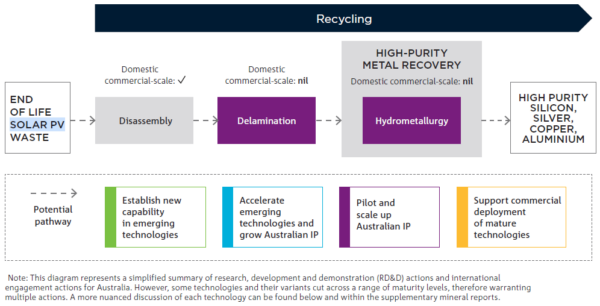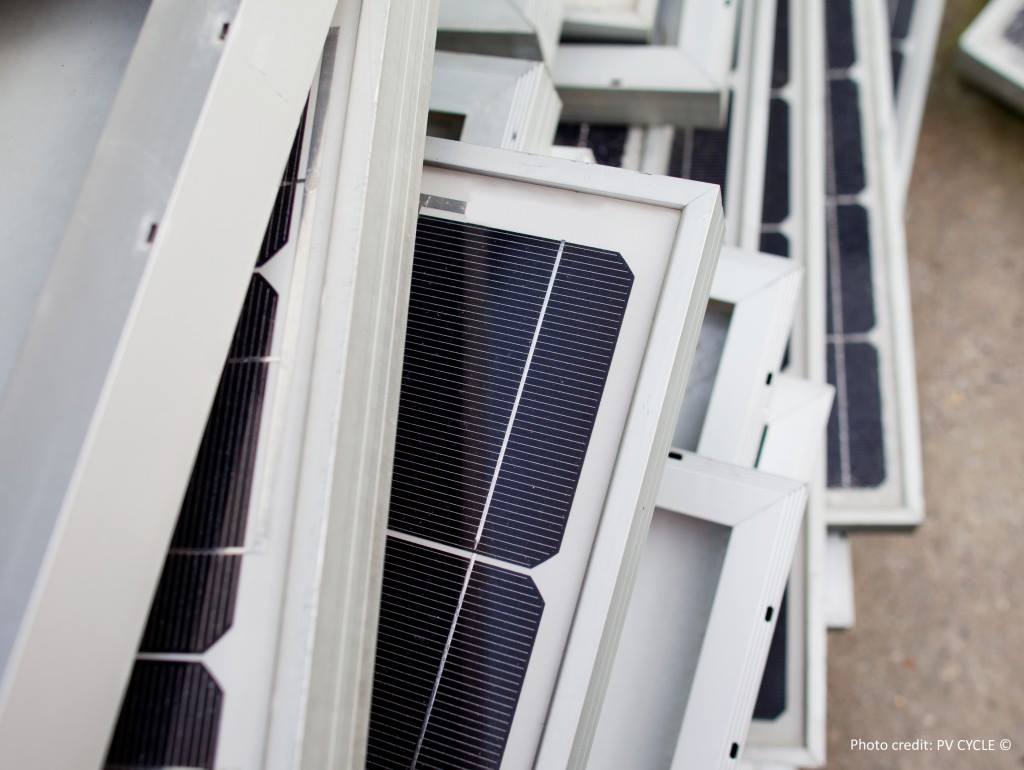Australia’s research, development and demonstration (RD&D) investment with international collaboration is key for Australia to develop mid-stream processing technologies for critical minerals, such as rare earth minerals and silicon used in solar cell and panel technology.
Requiring an evolution from dig and ship models, the “From Minerals to Materials: Assessment of Australia’s critical mineral mid-stream processing capabilities” report says prioritizing RD&D investment will help Australia take advantage of the demand for energy transition minerals across the entire supply chain.
For solar, it says RD&D can enhance cost and sustainability competitiveness through the development and optimization of solar recycling technologies, which would increase the volumes and quality of critical minerals recovered for an improved circular economy.

“The global solar industry has been dominated by low-cost bulk and low-purity processes due to the challenging economics of solar recycling. Australia’s growing solar waste stream and RD&D processes targeting great recovery of high-quality materials could improve the viability of domestic projects,” the report says.
“Given the global momentum in this research area and Australia’s RD&D activity, there is an opportunity to pilot and demonstrate domestic intellectual property (IP). RD&D focus areas include delamination technologies and hydrometallurgical recovery of high purity materials.”
“Given many technologies have been piloted overseas, collaboration will be essential to ensure Australia’s efforts and investment are not duplicative,” the report says.
CSIRO Futures Minerals Lead Max Temminghoff said the report will contribute to Australia’s efforts to develop beyond mining and shipping to higher-value processing and manufacturing using critical minerals.
“This report presents an optimistic outlook, providing insights into current RD&D capabilities and a pathway forward,” Temminghoff said.
“Australia has a rich critical minerals resource endowment and world-leading capabilities across several mid-stream activities but to become competitive in mid-stream processing, promoting innovation, coordinating efforts across industry, research and government and international collaboration are essential.”
The report says that critical mineral demand has doubled in the past five years to AUD488.3 billion ($320 billion), with lithium, cobalt, silicon, rare earth elements and graphite peaking on the back of the continued deployment of solar and wind and exponential growth of electric vehicles (EVs).
Australian Critical Minerals Research and Development Hub Manager Lucy O’Connor said the report provides information for industry, international partners and investors, as well as the R&D sector.
“The report is for sectors that need to identify comparative opportunities as well as the most challenging technical bottlenecks for the sector when developing integrated supply chains in critical minerals,” O’Connor said.
“We need to ensure research is targeted to industry problems and outcomes and can be developed into commercially applicable technologies,” O’Connor said.
This content is protected by copyright and may not be reused. If you want to cooperate with us and would like to reuse some of our content, please contact: editors@pv-magazine.com.



By submitting this form you agree to pv magazine using your data for the purposes of publishing your comment.
Your personal data will only be disclosed or otherwise transmitted to third parties for the purposes of spam filtering or if this is necessary for technical maintenance of the website. Any other transfer to third parties will not take place unless this is justified on the basis of applicable data protection regulations or if pv magazine is legally obliged to do so.
You may revoke this consent at any time with effect for the future, in which case your personal data will be deleted immediately. Otherwise, your data will be deleted if pv magazine has processed your request or the purpose of data storage is fulfilled.
Further information on data privacy can be found in our Data Protection Policy.